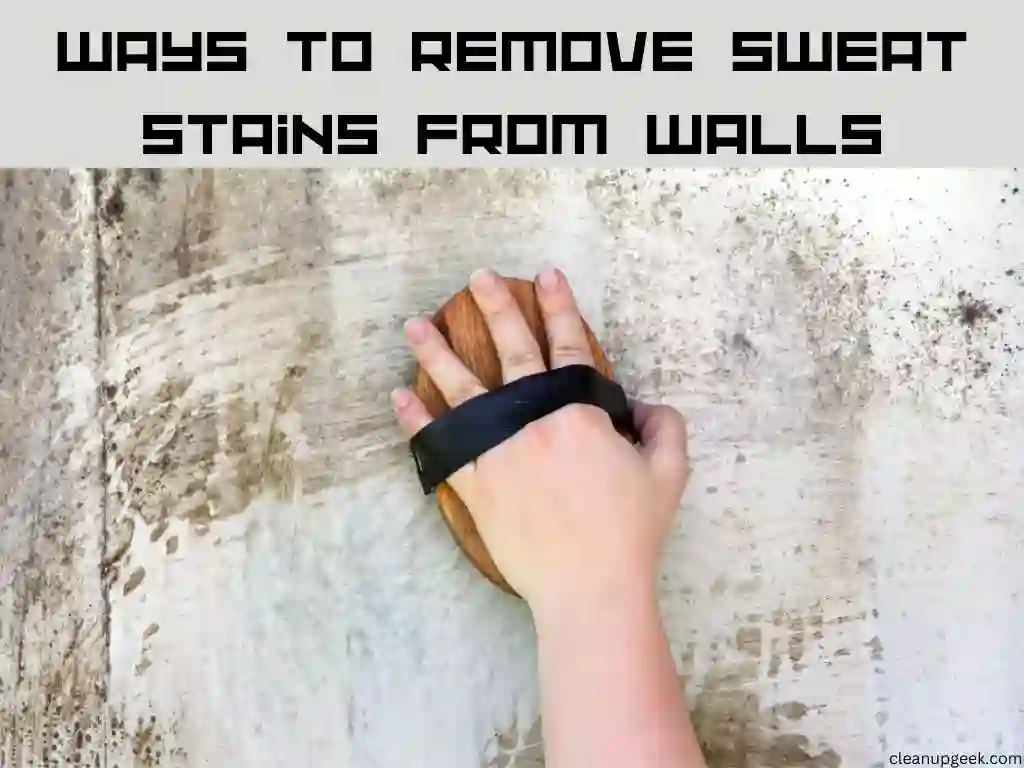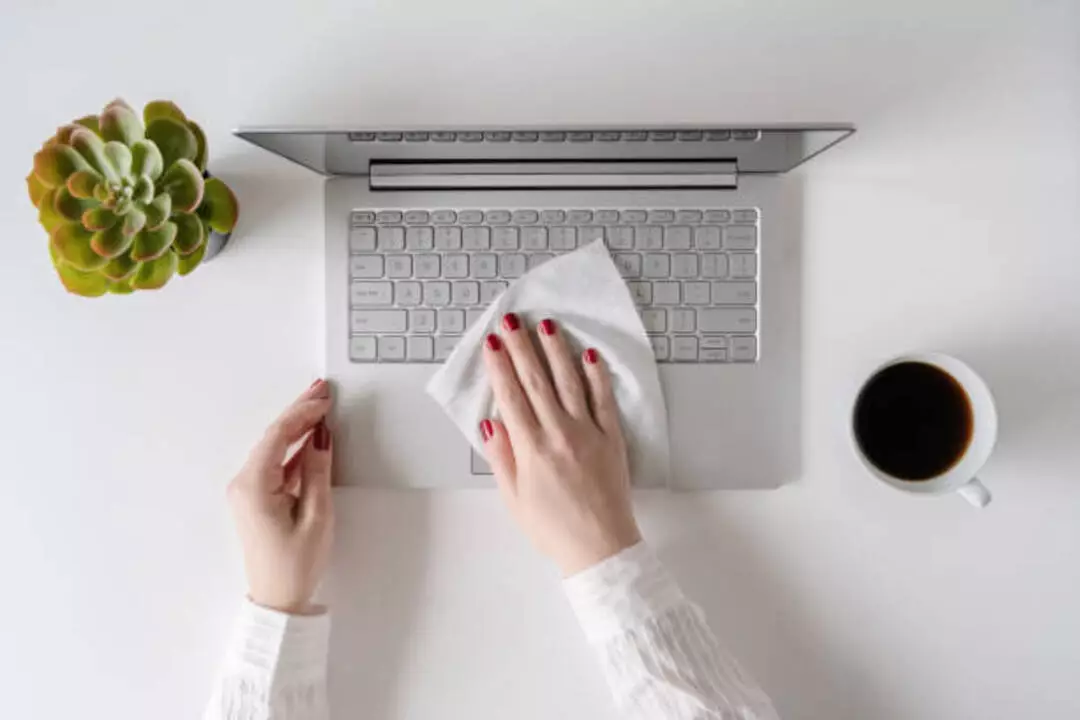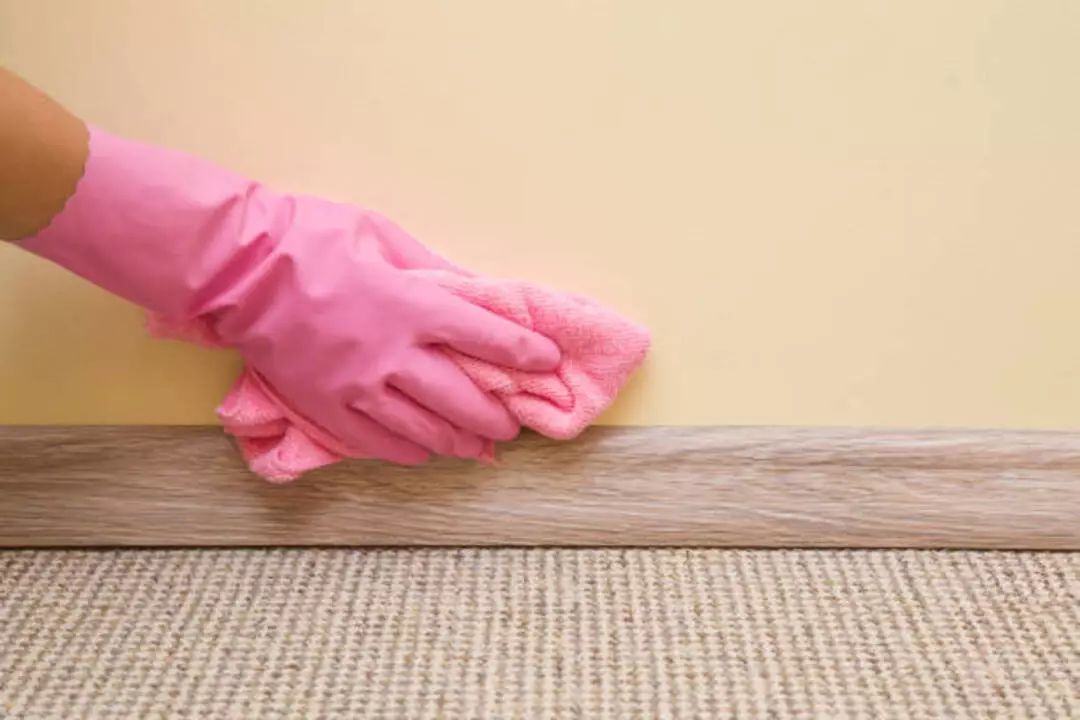A clean and fresh bed is crucial for a peaceful and restful sleep, but it’s not always easy to maintain. However, with a few simple tips and tricks, you can freshen up your sleep and create a clean and relaxing sleeping environment.
In this article, we will explore the factors that contribute to bad odors in your bed and the benefits of maintaining good bed hygiene. We will also provide you with practical tips for a fresh sleeping environment, including cleaning your sheets regularly, using air fresheners and vacuum cleaners, and more.
Whether you’re dealing with musty smells, or pet odors, or simply want to create a cleaner sleeping environment, we’ve got you covered.
So, let’s dive in and freshen up your sleep for a better night’s rest.
Key Takeaways
- Keeping your sleeping environment cool and well-ventilated is important for preventing bad odors in your bed.
- Regularly cleaning your sheets, mattress, and bedroom can help eliminate bad smells and improve air quality.
- Installing a mattress topper and flipping your mattress can protect it from stains and odors.
- Good bed hygiene can lead to a restful night’s sleep and provide a mental boost.
Practical Tips for Cleaning Your Bed
Cleaning your bed regularly is vital for a restful night’s sleep and reducing allergens. Follow this step-by-step guide to keep your mattress clean and hygienic.
1. Gather your supplies, including a vacuum, enzyme cleaner, and baking soda.
Once you’ve gathered your cleaning supplies, it’s time to start the actual cleaning process. First, strip your bedding and wash it in hot water to kill any bacteria or dust mites lurking in your sheets and pillows. While the bedding is washing, use your vacuum to thoroughly clean your mattress, paying close attention to seams and crevices where dirt and debris can accumulate.
Next, use an enzyme cleaner (available at most pet stores) to tackle any lingering stains or odors on your mattress. Enzyme cleaners work by breaking down proteins in organic material like urine or sweat, making them a great option for removing bodily fluids from your mattress. Simply spray the cleaner onto the affected area and let it sit for 15-20 minutes before blotting away with a clean cloth.
Finally, sprinkle baking soda over the entire surface of your mattress and let it sit for several hours (or overnight) before vacuuming it up. Baking soda helps absorb any remaining moisture in the mattress, while also neutralizing unpleasant smells. With these three steps complete, you can rest easy knowing that your bed is fresh, clean, and ready for a good night’s sleep.
2. Strip the bed and wash all bedding and mattress covers.
Once you have removed all pillows and cushions from your bed, it’s time to strip the bed. Remove all sheets, pillowcases, and any other bedding that may be on your bed. If you have a mattress cover or protector, remove it as well. Make sure to check for any stains or spots that may need extra attention during the washing process.
Next, gather all of the bedding and wash it in hot water with laundry detergent. It’s important to use hot water, as this will help kill any bacteria or dust mites that may be lurking within your sheets. Once washed, dry them on high heat until they are completely dry.
If you have a mattress cover or protector, make sure to follow the manufacturer’s instructions for washing. Some covers can be machine-washed, while others require handwashing. Once washed and dried, replace all bedding back onto your freshly cleaned mattress for a comfortable and restful night’s sleep.
3. Vacuum the mattress thoroughly, including the sides, using the upholstery attachment and the crevice attachment for hidden dirt.
Vacuuming your mattress is an essential step in cleaning your bed. Even if you regularly change your sheets, dust mites and other microscopic organisms can still accumulate on the surface of your mattress. Using the upholstery attachment on your vacuum cleaner, start at one end of the mattress and work your way to the other end, making sure to cover every inch of its surface. Don’t forget to also vacuum the sides of your mattress as these areas can accumulate dirt and dust.
To get rid of hidden dirt that may be nestled deep within crevices or seams, use a crevice attachment. This will help you access hard-to-reach areas like indentations or stitching details where dust, hair, and other debris may have accumulated over time. Be thorough in this process so that you don’t miss any spots that could cause unwanted smells later on.
By properly vacuuming all parts of your mattress with both attachments, you’ll be able to keep it clean from top to bottom. Regular cleaning will help extend its lifespan while ensuring that it remains fresh-smelling and hygienic for a good night’s sleep every time.
4. Spot-clean any stains with an appropriate stain remover, such as an enzyme cleaner for biological stains, using only minimal moisture.
For some, getting stains out of bedding can be a nightmare. However, with the right stain remover and technique, it’s not as difficult as it seems. When dealing with biological stains such as blood or urine, an enzyme cleaner is the way to go. These cleaners contain enzymes that break down the proteins in these types of stains and eliminate them from your bedding.
When spot-cleaning any stain, it’s essential to use minimal moisture to avoid spreading the problem area further or wetting too much of your bedding. Start by gently removing any excess material with a clean cloth before applying your chosen stain remover. Use a small amount of cleaner and apply it directly to the stain before letting it sit for at least 10-15 minutes. Afterward, gently rub the area with a soft-bristled brush or cloth until you see the stain lift.
Once complete, rinse the bedding thoroughly with water before allowing it to air dry entirely. It’s best to avoid using high heat settings when drying your bedding after cleaning since high temperatures can set any remaining stains permanently into fabric fibers.
5. Sprinkle baking soda over the mattress and leave it for several hours to absorb moisture and odors.
After stripping your bed off all the linens, it’s time to give your mattress a good deep clean. One of the easiest and most effective ways to do this is by using baking soda. Sprinkling a generous amount of baking soda over your mattress will help absorb any moisture or odors that may have accumulated over time. As you leave the baking soda on the surface for several hours, it will work its magic and neutralize any unpleasant smells.
Once you’ve given the baking soda enough time to sit on your mattress, use a vacuum cleaner with an upholstery attachment to remove it thoroughly. This will not only get rid of any remaining odors but also lift away dead skin cells, dust mites, and other debris that might be lurking in your bed. It’s important to note that regular cleaning of your mattress can help extend its lifespan and prevent allergies caused by dust mites.
In addition to using baking soda as a natural deodorizer, you could also incorporate essential oils into this step for added benefits. A few drops of lavender oil or tea tree oil mixed with baking soda can create a calming effect and reduce bacteria buildup respectively. Overall, sprinkling baking soda over your mattress is an easy way to keep it fresh and healthy without breaking the bank.
6. Open windows and expose the mattress to sunlight if possible, to kill any bacteria or mold.
The sun’s UV rays are a natural disinfectant that can kill bacteria and mold spores. By opening your windows and exposing your mattress to sunlight, you can effectively eliminate any lingering pathogens. This is especially important if your mattress has been exposed to moisture or humidity, as these conditions create a breeding ground for bacteria and mold.
To maximize the effect of sunlight on your mattress, remove all bedding and pillows first. Then, place the mattress in direct sunlight for several hours. Make sure to rotate it periodically so that all sides receive equal exposure. If it’s not possible to move your mattress outside, simply open the windows and let the sunlight shine in as much as possible.
Overall, incorporating this step into your regular bed cleaning routine can help keep your sleeping environment healthy and fresh. It’s an easy way to reduce allergens and odors while also extending the life of your mattress.
7. Vacuum thoroughly to remove the baking soda.
After letting the baking soda sit on your mattress for at least 30 minutes, it’s time to vacuum it up. It is essential to use a vacuum cleaner with a good filtration system to pick up all the baking soda and any loose dirt or dust that may be present on your bed.
When vacuuming, make sure to go over every inch of the mattress thoroughly. Use an upholstery attachment or crevice tool to get into tight spaces and corners where dirt can accumulate. Pay special attention to areas around seams and edges as these are often overlooked when cleaning bedding.
Once you’ve finished vacuuming, check for any remaining baking soda residue by rubbing a clean cloth over the surface of your mattress. If you see any white powder left behind, repeat the process until there is no more visible residue. Vacuuming your mattress regularly not only keeps it clean but also helps extend its lifespan by preventing dust mites and other allergens from accumulating on the surface.
8. Flip the mattress and repeat steps 1-7 on the other side.
Flipping the mattress is an essential step in cleaning your bed. It helps to even out the wear and tear on the mattress and also ensures that it stays hygienic. Once you have completed steps 1-7 on one side of the mattress, it’s time to flip it over and repeat the process on the other side.
Before flipping, make sure to remove any bedding or protectors from the mattress. Then, carefully lift and rotate the mattress so that what was previously at the top is now at the bottom. Once in position, repeat steps 1-7 as before.
It’s worth noting that not all mattresses need to be flipped – some are designed with specific top and bottom layers. If this is the case with your mattress, simply skip this step and move on to step 9 of our cleaning guide. Regardless of whether you flip your mattress or not, regularly rotating it can help extend its lifespan and keep it fresh for longer.
9. Wash pillows if possible following care labels.
Pillows are an essential part of our bedding and often go unnoticed when it comes to cleaning. However, they too need to be washed regularly to maintain hygiene and freshness. Before washing pillows, it is important to check the care labels, as some may require dry cleaning only. If the pillows can be washed, then place them in the washing machine along with a mild detergent and set them on a gentle cycle.
After washing, remove excess water by placing them in the dryer on low heat or air-drying them outdoors. It is crucial not to leave them damp for long periods, as this could lead to mold growth or unpleasant odors. Additionally, if you have a feather or down-filled pillows, adding a few tennis balls during drying will help fluff up the filling and prevent clumping.
In conclusion, maintaining clean pillows is vital for good sleep hygiene and overall health. By following care labels and washing instructions carefully, you can ensure that your pillows stay fresh and hygienic all year round.
10. Air out pillows and cushions in the sun to kill bacteria and odors.
Pillows and cushions are an essential part of our beds, and they need to be cleaned regularly. Air out pillows and cushions in the sun to kill bacteria and odors. UV rays from sunlight help to kill germs, bacteria, and mites that thrive in moist places like pillows. It also helps to remove bad odors from your pillow.
Firstly, take your pillows or cushions outside on a sunny day. Then put them down on a clean surface like a table or floor mat where there is direct sunlight exposure. Unzip the covers if possible so that both sides can receive the full benefit of sunshine rays. Leave them for at least 2-3 hours before bringing them back inside.
Lastly, make sure you keep your pillows or cushions clean by washing their covers regularly using hot water with detergent as this will prevent any buildup of dirt or dead skin cells which can cause allergens to flourish within the fabric over time. This practice is necessary for maintaining good hygiene standards in your bedroom.
11. Rotate and flip the mattress every few months for optimal wear and tear.
Flipping and rotating your mattress every few months is one of the simplest yet effective ways to extend its lifespan. This trick can help distribute the wear and tear evenly, preventing sagging or lumps from forming in certain areas. When a mattress is flipped and rotated regularly, it also ensures that you get even support throughout the night regardless of which side you sleep on.
To rotate your mattress, start by removing all bedding and pillows. Lift one end of the mattress and slide it towards the center of your bed. Then, repeat this action with the other side until you have turned it 180 degrees. For flipping your mattress over completely, lift one end up while standing at the foot of your bed and push it down towards where you were previously sitting when facing that end. Repeat this with each corner until you have flipped it over entirely.
By taking these simple steps every few months, not only will your mattress last longer but also provide better support for a more comfortable sleep experience overall. So don’t forget to rotate and flip.
12. Use a mattress protector to prevent spills, dirt, and bed bugs.
A mattress protector is an essential accessory that every homeowner should invest in to keep their mattress fresh and clean. It protects the bed against spills, stains, dirt, and dust mites, making it easier to maintain a healthy sleeping environment. Additionally, protectors are made from waterproof materials that prevent moisture from penetrating the mattress surface, which can cause mold growth and odor.
Bed bugs can be a real problem if you do not take proper precautions. While they are not really harmful to humans as they do not carry disease or anything like that, they can cause itching and rashes. A bed bug infestation can also lead to sleepless nights because these little pests tend to bite at night while people are asleep. Using a mattress protector is one of the most effective ways of preventing bed bugs from infesting your mattress. The protector creates an inhospitable environment for the bugs by sealing off any entry points.
In summary, using a mattress protector is crucial for maintaining cleanliness and hygiene in your bedroom. It prevents spills, dirt accumulation, dust mites build-up as well as protecting against bed bug infestations. To get the best results from your protector, make sure you choose one made of high-quality materials that will stand up to regular use over time.
13. Wash the mattress protector regularly.
Washing your mattress protector is an important part of maintaining a clean and healthy sleep environment. Not only does it protect your mattress from spills and stains, but it also helps to prevent the accumulation of dust mites, allergens, and other debris that can accumulate over time. To keep your mattress protector in tip-top shape, it’s recommended that you wash it at least once every three months.
To wash your mattress protector, simply remove it from the bed and follow the care instructions on the label. Most protectors can be machine washed in cold water with a mild detergent. Avoid using bleach or fabric softeners as these can damage the waterproof layer of the protector. Once washed, tumble dry on low heat or air dry.
In addition to regularly washing your mattress protector, it’s also important to vacuum your mattress regularly to remove any dust or debris that may have accumulated there over time. You should also consider rotating your mattress every 3-6 months to help distribute wear evenly across its surface. By following these simple steps, you can ensure that your bed remains clean and comfortable for years to come.
14. Vacuum and wipe down the bed frame, headboard, and footboard to eliminate any dust and dirt.
After removing all the bedding, it’s important to vacuum and wipe down the bed frame, headboard, and footboard. These areas are often overlooked during regular cleaning routines but can collect a significant amount of dust and dirt over time. The easiest way to tackle this task is by using a handheld vacuum or an attachment specifically designed for furniture and crevices.
Once you have removed any loose debris with the vacuum, it’s time to wipe down these areas with a damp cloth. This will help eliminate any remaining dust and dirt while also disinfecting the surfaces. For an extra deep clean, you can mix warm water with a few drops of dish soap or vinegar and use that solution to wipe down your bed frame, headboard, and footboard.
Don’t forget to pay special attention to any intricate details on your bed frame or carving on your headboard that could be hiding dirt or dust. By taking the time to thoroughly clean these areas, you’ll not only improve the overall appearance of your bed but also contribute to better indoor air quality in your bedroom.
15. Wash decorative pillows, throws, and blankets regularly.
Decorative pillows throws, and blankets add a touch of style and comfort to your bed. However, they can also harbor dust, dirt, and allergens if not cleaned regularly. To wash these items safely and effectively, start by checking the care label for any specific instructions.
For most decorative pillows and throws made of cotton or synthetic materials, you can machine wash them in cold water with a gentle detergent on a delicate cycle. Avoid using bleach or fabric softeners that can damage the fibers or leave a residue. Tumble dry on low heat or air dry to prevent shrinkage.
Blankets made of wool or down require special care as they may shrink or lose their shape if washed improperly. It’s best to follow the manufacturer’s instructions for washing these items. Alternatively, you can take them to a professional cleaner who specializes in cleaning woolen or down products.
By washing your decorative pillows, throws, and blankets regularly, you’ll not only keep them looking fresh but also improve the indoor air quality in your bedroom. Don’t forget to vacuum them periodically between washes to remove any surface dirt or debris that might accumulate over time.
16. Consider using a HEPA filter in your vacuum to improve indoor air quality.
One of the often-overlooked areas when it comes to cleaning your bed is the floor. The carpet and other surfaces in your bedroom can harbor dust, pet dander, and other allergens that can cause respiratory problems when inhaled over time. Using a vacuum with a HEPA filter can significantly improve indoor air quality by trapping these tiny particles as you clean.
HEPA filters are designed to capture 99.97% of airborne particles as small as 0.3 microns, which means they are incredibly effective at removing even the tiniest contaminants from your home’s air. When shopping for vacuums with HEPA filters, look for models specifically designed for allergy sufferers or those labeled as “certified asthma and allergy-friendly” by reputable organizations like the Asthma and Allergy Foundation of America.
If you’re not ready to invest in a new vacuum cleaner but still want to improve indoor air quality, consider using a HEPA filter attachment on your existing machine. These attachments fit onto most standard vacuum cleaners and allow you to upgrade their filtration capabilities without having to purchase an entirely new unit.
17. Avoid eating and drinking in bed to prevent stains and spills.
Eating or drinking in bed can cause a lot of stains and spills that are difficult to clean. Crumbs from food and spilled liquids can attract insects, leaving your bed unhygienic. In addition, if you spill something that contains sugar, it can lead to the growth of bacteria and mold.
To prevent such issues, avoid eating or drinking in bed altogether. If you must have something to eat or drink before going to bed, do so in another area of your home like the kitchen or dining room. This way, you won’t have any accidental spills on your bedding.
It’s important to maintain cleanliness in your sleeping environment as much as possible. Eating and drinking in bed is not only unhygienic but also ruins the quality of your sheets and mattress over time. Thus, avoiding this habit will help ensure that your bedding stays clean for longer periods between washes.
18. Reduce indoor humidity levels by using a dehumidifier to prevent mold and mildew.
Excess humidity in your home can lead to mold and mildew growth, which not only cause an unpleasant odor but may also pose health risks. To prevent these problems, consider investing in a dehumidifier. A dehumidifier works by removing excess moisture from the air, thus reducing indoor humidity levels. This device is especially useful in areas with poor ventilation or high levels of moisture, such as bathrooms, basements, and laundry rooms.
When using a dehumidifier, it’s crucial to choose the right size for your space. A small unit may not be able to keep up with the demands of a large room while an overly powerful unit may consume too much electricity unnecessarily. Another important factor to consider is maintenance. Be sure to clean and maintain your dehumidifier regularly according to the manufacturer’s instructions to ensure optimal performance and prolong its lifespan.
In addition to using a dehumidifier, there are other ways you can reduce indoor humidity levels such as repairing leaks promptly, ventilating your home properly (e.g., opening windows or running exhaust fans), and avoiding activities that generate excess moisture (e.g., boiling water on the stove without a lid). By taking steps to control indoor humidity levels in your home, you’ll be able to create a healthy living environment while preventing mold growth and associated health risks.
19. Check mattress labels for cleaning guidance and avoid using harsh chemicals or excessive moisture during cleaning.
When it comes to cleaning your mattress, it’s important to pay attention to the labels for guidance on how to properly clean and maintain your bed. Harsh chemicals and excessive moisture can damage the fabric, fibers, and materials in your mattress, leading to a shorter lifespan and potential health hazards.
Instead of using harsh chemicals, opt for natural cleaning solutions like baking soda or vinegar mixed with water. These gentle cleaners can effectively remove stains and odors without compromising the integrity of your mattress. Additionally, avoid using too much moisture during cleaning as this can lead to mold growth or damage to the foam layers inside.
Regular maintenance is key when it comes to caring for your mattress. Use a vacuum attachment to remove dirt and dust from the surface of your mattress every few months. Investing in a quality mattress protector can also help keep your bed clean by preventing spills and stains from seeping into the fabric. Following these tips will not only prolong the life of your bed but also ensure that you have a comfortable sleeping environment free from harmful toxins.
Following these practical tips for cleaning your bed regularly can reduce allergens, prolong mattress life, and promote a healthier, more comfortable sleep environment.
Factors Contributing to Odors

If you neglect to thoroughly clean your bedroom and remove sources of bad odors, such as dust, soil, and spoiled food, your bed could quickly become a magnet for allergens and musty smells.
Dust is made up of dead skin, pollen, insect droppings, pet hair, and dander, insects, and dirt. Soil can cause musty or damp odors that can linger in your sleeping environment. Food that has been left out or spoiled can also cause bad smells that can permeate your sheets and mattress.
Cleaning techniques such as vacuuming, using baking soda and white vinegar, and washing your sheets regularly can help prevent bad odors from accumulating in your bed. But to truly eliminate bad smells, you need to identify hidden sources of bad smells and remove them.
This could include checking for wet laundry, cleaning your closet, and ensuring that you dispose of food waste properly. By taking these steps, you’ll be able to enjoy a clean and fresh sleeping environment, free from bad odors and allergens.
Benefits of Clean Bed Hygiene
You can improve your overall health and well-being by simply maintaining good bed hygiene. Sleeping in a clean and fresh bed can reduce your chances of getting sick and provide a restful night’s sleep that will leave you feeling rejuvenated and ready to tackle the day ahead. The importance of cleanliness cannot be overstated, especially when it comes to where you spend a third of your life. By keeping your bed clean, you are eliminating allergens, dust, and other particles that can negatively affect your health and well-being.
In addition to the health benefits of a clean bed, the act of cleaning your bed can also provide a mental boost. Completing a task around the house can be an excellent way to lift your mood and give you a sense of accomplishment. Making your bed every morning can even become a small act of rebellion against the chaos of the world, giving you a subconscious sense of freedom. So, take the time to clean your bed regularly, and enjoy the benefits of a clean and fresh sleeping environment.
| Benefits of Clean Bed Hygiene | Emotional Response |
|---|---|
| Reduces chances of getting sick | Peace of mind |
| Provides a restful night’s sleep | Sense of control |
| Eliminates allergens, dust, and other particles | Sense of accomplishment |
| Improves overall health and well-being | Small act of rebellion against chaos |
Tips for a Fresh Sleeping Environment
Maintaining a cool temperature in your sleeping environment can enhance your comfort and promote a restful night’s sleep. You can achieve this by using cooling techniques such as a fan, air conditioning, or opening a window.
Additionally, scented bedding can also contribute to a fresh sleeping environment. Choose bedding with scents such as lavender or eucalyptus to promote relaxation and reduce stress levels.
Incorporate these cooling techniques and scented bedding into your sleep routine for a more comfortable and relaxing experience. Don’t let a hot and stuffy room disrupt your sleep, and instead, create a cool and inviting atmosphere.
With these tips, you can enhance your sleep quality and wake up feeling refreshed and ready to tackle the day ahead.
Quick Fixes for Bad Smells
Easily eliminate bad smells from your bed by changing your bedding regularly. Body odors, sweat, and dirt can accumulate on your sheets, pillows, and comforter over time, leading to unpleasant smells. By washing your bedding at least once a week with fragrant detergent, you can ensure that any bad odors are removed and your bed stays fresh and clean.
In addition to washing your bedding, you can also use cleaning products or natural remedies to get rid of bad smells. Check out the table below for some quick fixes for bad smells in your bed. From baking soda to essential oils, there are plenty of options to choose from to keep your bed smelling great and help you get a restful night’s sleep.
| Cleaning Products | Natural Remedies | Other Tips |
|---|---|---|
| Baking soda | Essential oils (lavender, peppermint, etc.) | Open windows to ventilate room |
| Distilled white vinegar | Activated charcoal | Use a mattress topper to protect your mattress |
| Enzyme cleaners | Citrus peels | Rotate and flip your mattress regularly |
| Fabric refreshers | Tea tree oil | Wash your pillows every six months |
Whether you prefer using cleaning products or natural remedies, there are plenty of ways to freshen up your sleep and keep your bed smelling great. Don’t let bad smells ruin your sleeping environment – try out some of these tips and enjoy a clean, fresh bed every night.
Frequently Asked Questions
How can I prevent my pets from leaving odor on my bed?
Oh, you love the scent of Fido on your bed? Of course not! Pet-friendly solutions to prevent odor include washing bedding frequently, using odor-eliminating sprays, and investing in a waterproof mattress protector for accidents. Don’t sacrifice sleep for your furry friend.
Is it necessary to use scented laundry detergent to keep my bed smelling fresh?
You don’t need scented laundry detergent to keep your bed smelling fresh. Try laundry detergent alternatives like vinegar or baking soda. You can also add a few drops of essential oils to your wash for fresh bedding.
Can using too much air freshener in my bedroom be harmful to my health?
Are you worried about the safety of using too much air freshener in your bedroom? Consider natural alternatives like essential oils, beeswax candles, or fresh flowers to freshen up your sleep without risking your health.
How often should I replace my mattress topper to maintain good bed hygiene?
To maintain good bed hygiene, replace your mattress topper every 2-3 years. The importance of ventilation and avoiding allergens cannot be overstated. Keep your sleeping environment clean and fresh for a freeing and restful sleep.
Are there any natural remedies for removing bad odors from my bed?
You can easily remove bad odors from your bed using natural remedies. Try DIY bed fresheners like baking soda, distilled white vinegar, or essential oils. These are affordable and effective solutions that give you the freedom to freshen up your sleep.
Conclusion
You now have all the information you need to create a clean and fresh sleeping environment. Remember, bad odors can quickly ruin your sleep experience, so it’s important to take steps to prevent them from accumulating.
By cleaning your sheets regularly, using air fresheners, and vacuuming your mattress, you can enjoy a clean and relaxing sleeping environment.
Did you know that the average person spends about one-third of their life sleeping? That’s a lot of time spent in bed! By taking care of your bed hygiene, you can ensure that you’re making the most of that time and getting the restful sleep you need to feel energized and refreshed.
So don’t neglect your bed hygiene – take the time to freshen up your sleep and create a clean and welcoming sleeping environment. Your body will thank you.















